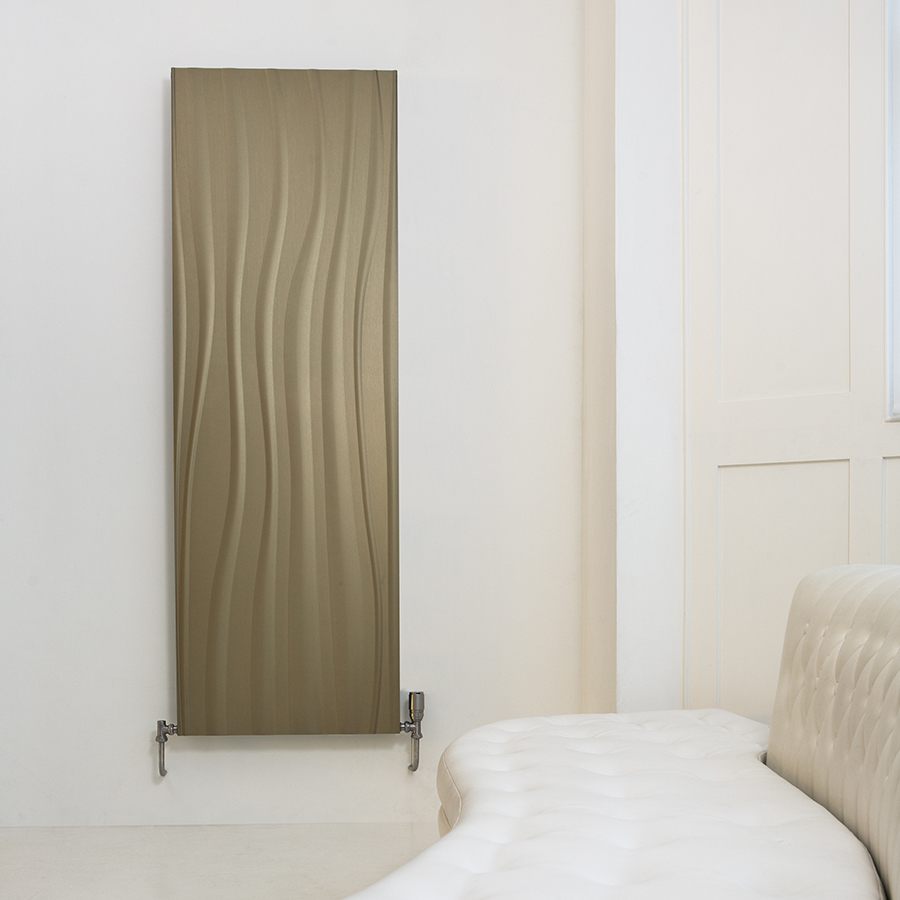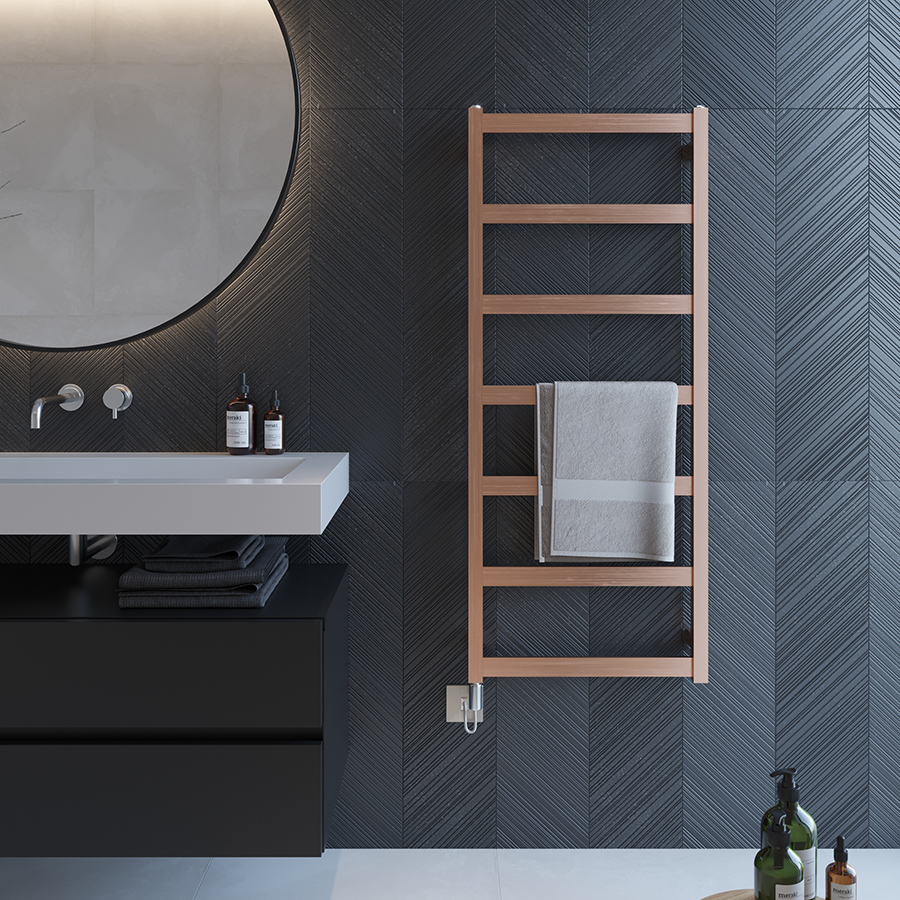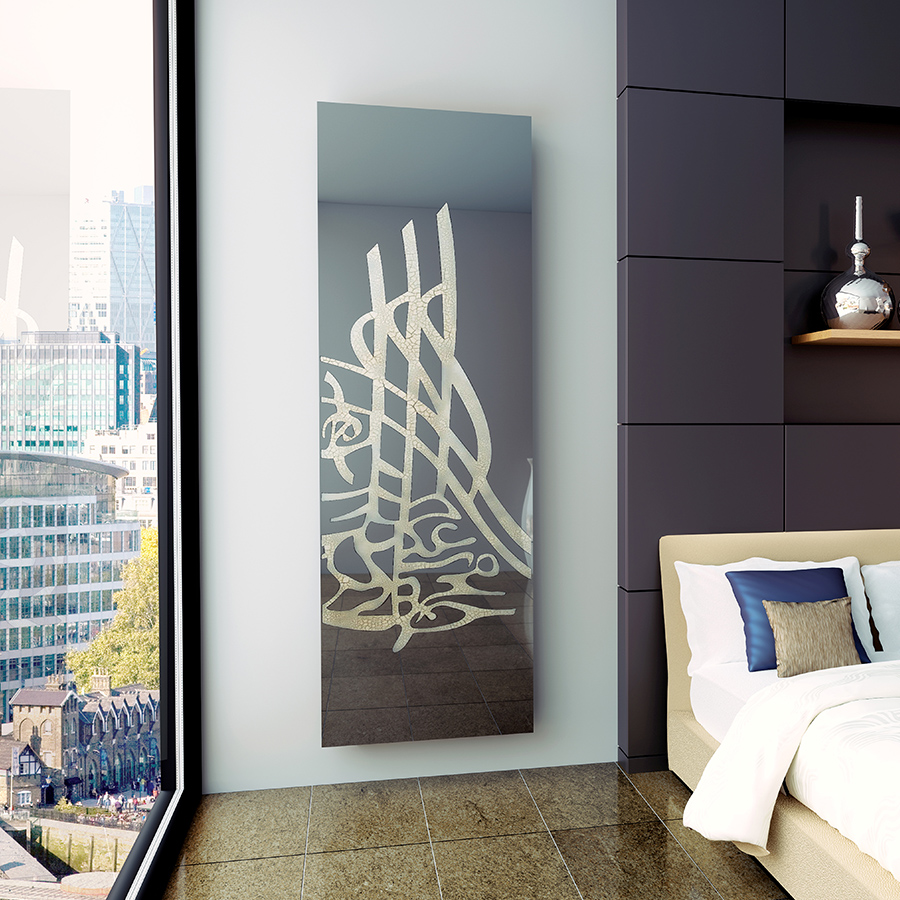Why not ditch the traditional, standard radiators and instead look for a solution that can match the whole interior design? Here are our tips in navigating through the available customisation options to ensure the best value – and design satisfaction – from the purchase.
Custom Paint
Custom paint finishes allow the opportunity to match a radiator with other details in the room, or to add new character to a traditional radiator or rail design.
Pick out a feature colour from soft furnishing by choosing an impactful, contrasting colour for a radiator. Alternatively, metallic finishes can coordinate with other properties in the space, such as light fixtures or frames.
Finally, for a more subtle interaction, or to reduce the impact of a heating solution on the space, simply match the radiator finish with the mounting wall.
It’s important to note that the heat output will be reduced once a custom paint or finish is applied. Most custom offerings will be applied on top of a base layer of white; this is especially important for lighter choices, as it helps to guarantee the accuracy of the final tone. In general, allow for a 20% reduction in heat output when selecting the size required.
Custom Process
To ensure a custom purchase will stand the test of time, consider stainless steel and aluminium heating solutions, which will remain free of rust and discolouration.
To add colour to these premium materials, we recommend anodisation for aluminium and physical vapour deposition for adding colour to stainless steel.
These processes are more limited than paint; the radiator manufacturer will predefine the finishes available, rather than offering an ‘any RAL’ choice to the consumer. However, both result in highly durable, beautifully even finishes, which will not chip or corrode and, moreover, heat outputs remain completely unaffected.



Custom Design
Beyond colour, it is possible to create virtually any size and shape of radiator with stainless steel. The customisation options available from some manufacturers are almost limitless. As the majority of these ranges are hand-tooled, the tooling cost of customising a given base design is minimal, so it’s simple to extend or reduce pipe dimensions, and to add or remove component elements.
This really allows the chance to maximise the effect of a radiator design within a unique place; a bespoke design might fan out across the triangular space created by stairs, or work around the angle of a window or the curve of a wall. The only factor to consider is the flow of water across the design; a radiator is there to serve a purpose after all.
For custom, double-check that the chosen radiator design includes various connection points. This will allow the accompanying pipework to follow the most direct route, look neat, and not detract from the custom design.
Also, don’t forget accessories. Go for coordinating valves for a complete and seamless look. When buying accessories, visit stockists to check that colours will indeed match, use RAL colour codes where applicable, and remember that it is not just colour, but finish and texture that you might want to match.
And, finally, assure the investment. A custom product will of course be a higher price than an off-the-shelf radiator. When investing in a custom product, make sure the brand uses good quality materials, manufacturing processes, and – importantly – has a reliable delivery record. It is also worth confirming the warranty period, and how any customisation may affect this.


